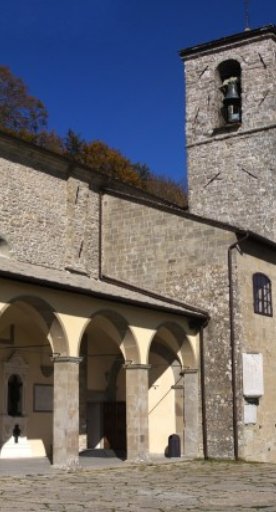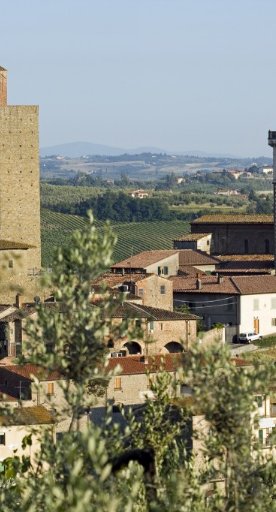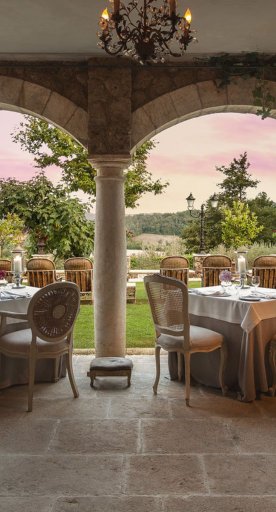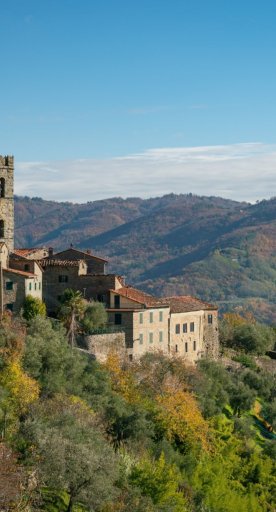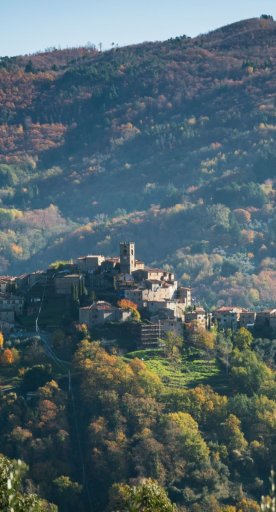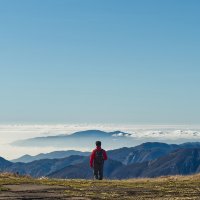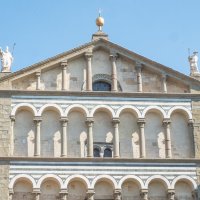
Monsummano Terme: overlooking Montalbano
Wellness, nature and taste: visiting the villages of Tuscany
Behold the panorama of Montalbano and the Fucecchio Marsh. Today, we are exploring Monsummano Terme, one of Tuscany’s traditional destinations, ideal for enjoying the benefits of a thermal spring while visiting the region as a whole. This is a strategic point that enables quick access to the tourist cities and surrounds. But there are also monuments and sites of considerable interest in the nearby areas. The itinerary we propose includes a route from the Castle of Monsummano Alto to the quaint neighboring villages.
The municipality of Monsummano Terme was founded upon the union of the oldest communities of the ancient fortified villages of Monsummano Alto and Montevettolini. The town is structured around the Sanctuary of Maria Santissima della Fontenuova which, since its beginnings in 1602, has been a place of veneration and a pilgrimage destination. Indeed, since 1573, many miraculous events have been attributed to the image of the Madonna, including a spring that sprang from a rock near the tabernacle, after which the Sanctuary would later be named. Across from the church is the Osteria dei Pellegrini, in a building commissioned by Grand Duke Ferdinand I that is today serves as the Museum of the City and Territory, established in 1998. Another museum of importance is the Museum of Contemporary and 20ᵗʰ Century Art, known as the “MAC,n” and housed since 2000 in the Villa Renatico Martini, which was constructed in 1887 in Monsummano Terme at the behest of Ferdinando Martini, a journalist, man of letters, and statesman.
The museum houses a civic collection, part of which is displayed in spaces on the ground floor. Works in the collection include those by Pietro Annigoni, Vinicio Berti, Ferdinando Chevrier, Lamberto Pignotti, Eugenio Miccini and Ketty La Rocca.

Skirting the Monsummano hill leads to the Grotta Giusti thermal springs establishment. Grotta Giusti, “the eighth wonder of the world,” originated on the slopes of the Monsummano hill in a stone and gravel quarry, belonging to Cavalier Domenico Giusti, a wealthy landowner from the Valdinievole. In addition to easing arthrosis and rheumatism, phlebitis and certain metabolic dysfunctions, dermatological afflictions, along with hypertensive and anxious states due to stress, the structure offers a broad range of spa therapies such as baths, mud baths, aerosols, inhalations and water aerobics in the thermal pool. Then there are physiotherapy treatments such as anti-stress massages, Swedish massages and Californian massages, Eastern disciplines such as shiatsu or Thai massage, along with aesthetic proposals for the face and body as well as dermatological and specific treatments for men.

The Castle of Monsummano Alto is the oldest nucleus of Monsummano, located some 984 feet (300 meters) above sea level, in a position dominating over the entire valley. The fortifications are elliptical in shape and may date back to the early medieval period given that the first records of this place date back to around the year 1000. In 1314, the castle was occupied by Florentine troops, along with others from the Valdinievole. In 1315, it was then recaptured by Castruccio Castracani, who inflicted a crushing defeat on the Florentines at the Battle of Montecatini. Among the architecture that still stands, the most significant is a massive and imposing pentagonal tower. Continuing towards the hamlet of Pozzarello, you reach the quaint village of Montevettolini.
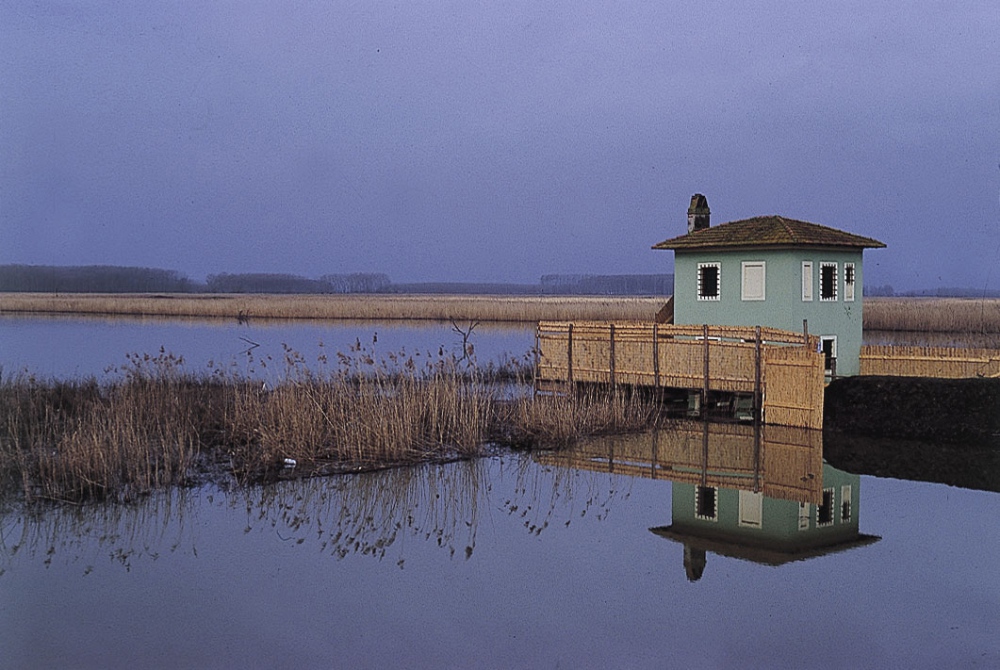
Two other interesting towns on the slopes of Montalbano and on the edge of the Fucecchio Marsh are Larciano and Lamporecchio. The historic nucleus of Larciano, consisting of the village of Larciano Castello, originated in Roman times and later became a feud of the Guidi counts. The 12ᵗʰ-century walls can be entered through three gates while the mighty quadrangular keep of the fortress, a privileged vantage point over the Valdinievole and Valdarno, can still be seen.

Lamporecchio’s popularity, however, is mainly linked to its typical dessert known throughout Italy, the Brigidino, and to the figure of Masetto, protagonist of a famous novella by Giovanni Boccaccio. This rich territory alternates between noble villas and medieval villages, olive fields and forests, with a strong food and wine tradition, where extra-virgin olive oil and wine represent excellence. Among the main historic residences is the Villa Rospigliosi built at the behest of Giulio Rospigliosi about the mid-17ᵗʰ century, based on a design that many scholars attribute to the workshop of Gian Lorenzo Bernini. From Lamporecchio, you can reach San Baronto, a small but popular tourist resort where you can enjoy a lovely vacation offering tranquility and rest, immersed in an evocative natural environment rich in greenery, with thick woods surrounding the residential area.





